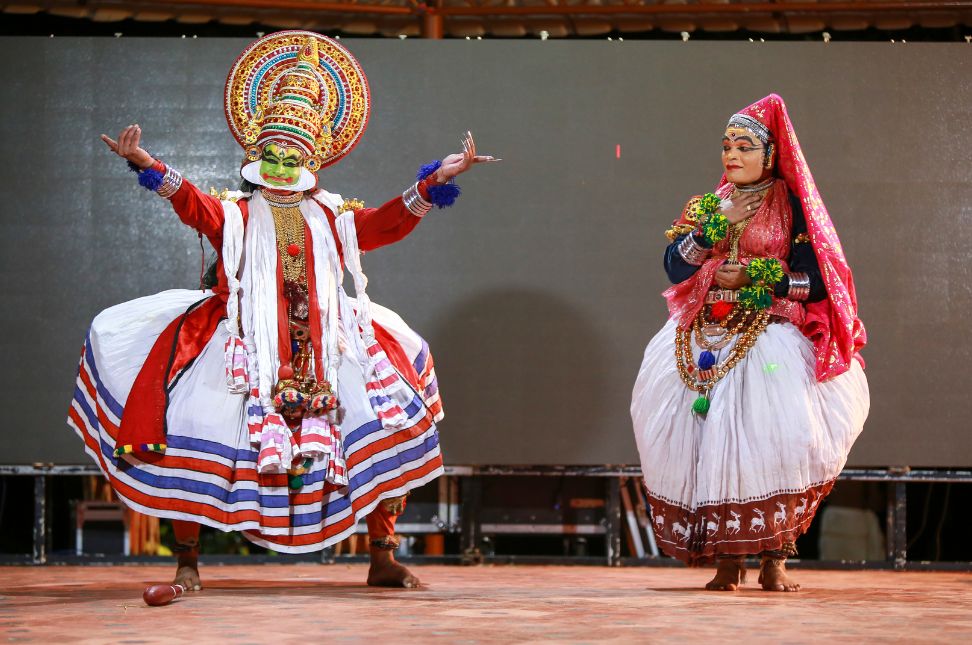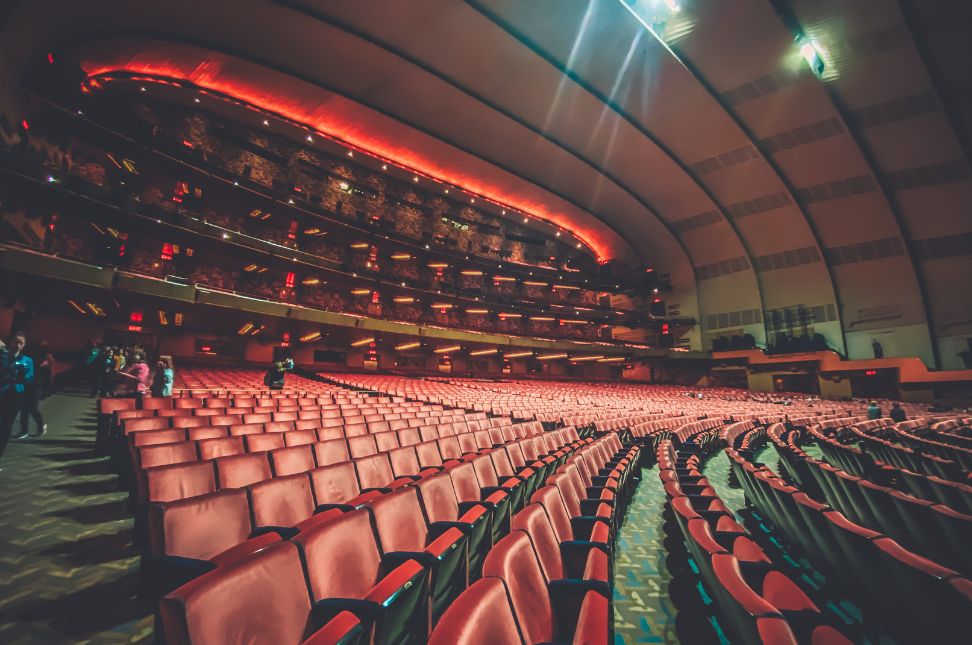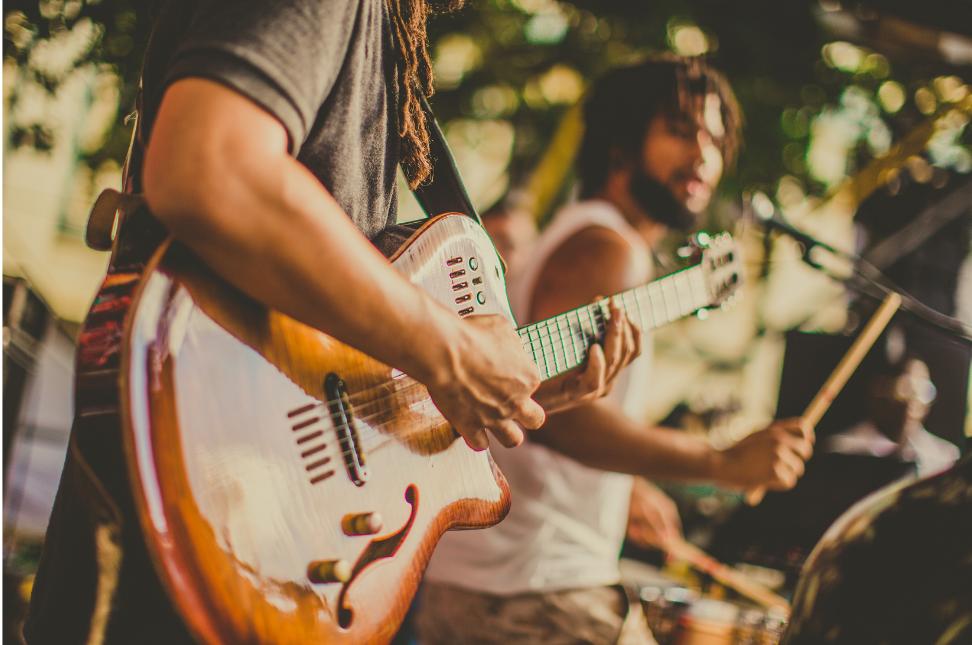Kathakali Dance in Kerala is one of the most visually captivating and culturally significant art forms in India. Known for its elaborate costumes, vivid makeup, and intricate storytelling, Kathakali is a classical dance drama that has been part of Kerala’s rich cultural heritage for centuries. Combining dance, music, acting, and ritualistic elements, Kathakali reflects the mythological stories and traditions of the region. It has gained international recognition, drawing art lovers and tourists from all over the world.
This article explores the history, unique features, and cultural significance of Kathakali Dance in Kerala, providing an in-depth look at why this art form is so iconic.
1. History of Kathakali Dance in Kerala
The origins of Kathakali Dance in Kerala can be traced back to the 17th century, although its roots lie even further in the ancient temple rituals and folk traditions of South India. It is believed to have evolved from earlier forms of dance and drama, such as Krishnanattam and Ramanattam, which focused on performances of Hindu mythology.
Kathakali flourished under the patronage of the royal families of Kerala, particularly the rulers of the Cochin and Travancore regions. Over time, it evolved into a highly sophisticated and stylized form of dance-drama, performed in temple courtyards and public spaces to convey epic stories from Hindu scriptures, such as the Ramayana and Mahabharata.
2. Unique Features of Kathakali Dance in Kerala
Several distinctive features make Kathakali Dance in Kerala stand out from other classical dance forms in India. Its powerful blend of physical expression, artistic precision, and narrative depth sets it apart.
a. Elaborate Costumes and Makeup
One of the first things that strike viewers about Kathakali Dance in Kerala is the elaborate costumes and makeup worn by the performers. The makeup, known as “Chutti,” is applied in intricate layers and is symbolic of the characters’ roles. For instance, green makeup represents gods and noble characters, while red and black signify villains or demons.
The costumes are equally impressive, with performers donning heavy, multi-layered skirts, headgear, and elaborate jewelry. Each costume is carefully designed to reflect the character’s nature, rank, and role within the story.
b. Intricate Facial Expressions
Kathakali relies heavily on facial expressions to convey emotions and actions. Performers undergo years of rigorous training to master the subtle movements of their eyes, eyebrows, and facial muscles. These expressions are integral to the storytelling aspect of Kathakali Dance in Kerala, as they help narrate the stories without the need for dialogue.
c. Powerful Gestures and Movements
The movements in Kathakali Dance in Kerala are highly stylized and symbolic. Performers use a complex language of hand gestures, known as “mudras,” to communicate various meanings. These gestures, combined with rhythmic footwork and dynamic body movements, allow the dancer to portray different characters, emotions, and scenes effectively.
d. Traditional Music and Percussion
Music plays an essential role in Kathakali Dance in Kerala, with live musicians accompanying the performers. The music is primarily composed of traditional instruments such as the chenda (drum), maddalam (another type of drum), and the chengila (gong). The rhythms are intense and often mirror the dramatic tension of the performance.
Vocalists narrate the story through songs, known as “padams,” which are written in Malayalam, the regional language of Kerala. The dialogue and lyrics are often in a poetic form, and the singers help guide the story as the performers express it through dance.
3. Themes and Stories in Kathakali
The majority of Kathakali Dance in Kerala performances are based on episodes from Hindu epics like the Mahabharata and Ramayana. These stories often revolve around the triumph of good over evil, moral lessons, and divine interventions. The characters depicted in Kathakali are usually gods, demons, kings, and sages, with each story bringing a moral or spiritual message to the audience.
Some well-known Kathakali performances include:
- Kalyanasougandhikam: The story of Bhima’s quest to find the magical flower for Draupadi.
- Narakasuravadham: The defeat of the demon Narakasura by Lord Krishna.
- Duryodhanavadham: A famous episode from the Mahabharata involving Duryodhana’s downfall.
These epic tales resonate deeply with the audience, and the grandeur of Kathakali Dance in Kerala makes the storytelling an immersive experience.
4. The Role of Training and Discipline
Becoming a Kathakali performer requires intense dedication and years of training. Traditionally, training begins at a young age and includes mastering the techniques of facial expressions, body movements, mudras, and breathing exercises. Physical endurance is critical as performances can last for several hours, requiring performers to maintain their energy and precision throughout.
Schools known as “Kalari” are dedicated to teaching Kathakali Dance in Kerala, where students are rigorously trained in all aspects of the performance. The training also emphasizes spiritual discipline, as Kathakali is not just a dance form but a deeply spiritual and ritualistic art.
5. The Cultural Significance of Kathakali in Kerala
Kathakali is more than just an art form; it is a cultural symbol deeply embedded in the identity of Kerala. Kathakali Dance in Kerala is considered a spiritual offering, often performed in temples during festivals and religious celebrations. The dance serves as a way to connect with the divine, with each performance seen as a form of worship.

In addition to its spiritual significance, Kathakali plays a vital role in preserving the heritage and traditions of Kerala. The dance is an important cultural export, and performances are often staged internationally to showcase Kerala’s rich artistic legacy.
6. Kathakali in Modern Times
While Kathakali Dance in Kerala has its roots in religious and temple traditions, it has evolved over time and gained recognition on global platforms. Modern Kathakali performances are often staged in theaters, cultural festivals, and even in contemporary settings to reach a broader audience.
Many Kathakali schools and academies in Kerala are actively involved in promoting the art form, offering classes and workshops to ensure that this centuries-old tradition continues to thrive. International tourists visiting Kerala often have the opportunity to witness Kathakali performances, which are included as part of cultural tourism initiatives.
7. Where to Experience Kathakali Dance in Kerala
For those interested in witnessing Kathakali Dance in Kerala, there are several venues and festivals where this art form is regularly performed:
- Kerala Kathakali Centre in Kochi: This is one of the most popular venues for tourists to experience Kathakali performances, along with training programs and makeup demonstrations.
- Cultural Festivals: Kathakali is often performed during major festivals in Kerala, such as Onam and Vishu. These festivals offer tourists a chance to witness traditional performances in their full grandeur.
- Temple Performances: Many temples in Kerala still uphold the tradition of performing Kathakali during special occasions, particularly in the Palakkad and Thrissur districts.
Conclusion
Kathakali Dance in Kerala is an extraordinary blend of art, spirituality, and storytelling. Its mesmerizing costumes, facial expressions, and powerful gestures make it one of the most captivating classical dance forms in India. With a legacy spanning centuries, Kathakali continues to thrive as a cultural icon of Kerala, attracting audiences from around the world.
For visitors to Kerala, experiencing a Kathakali performance is an unforgettable journey into the heart of the state’s cultural and artistic heritage. Whether performed in a temple courtyard or a modern theater, Kathakali Dance in Kerala remains a vivid expression of Kerala’s soul.




